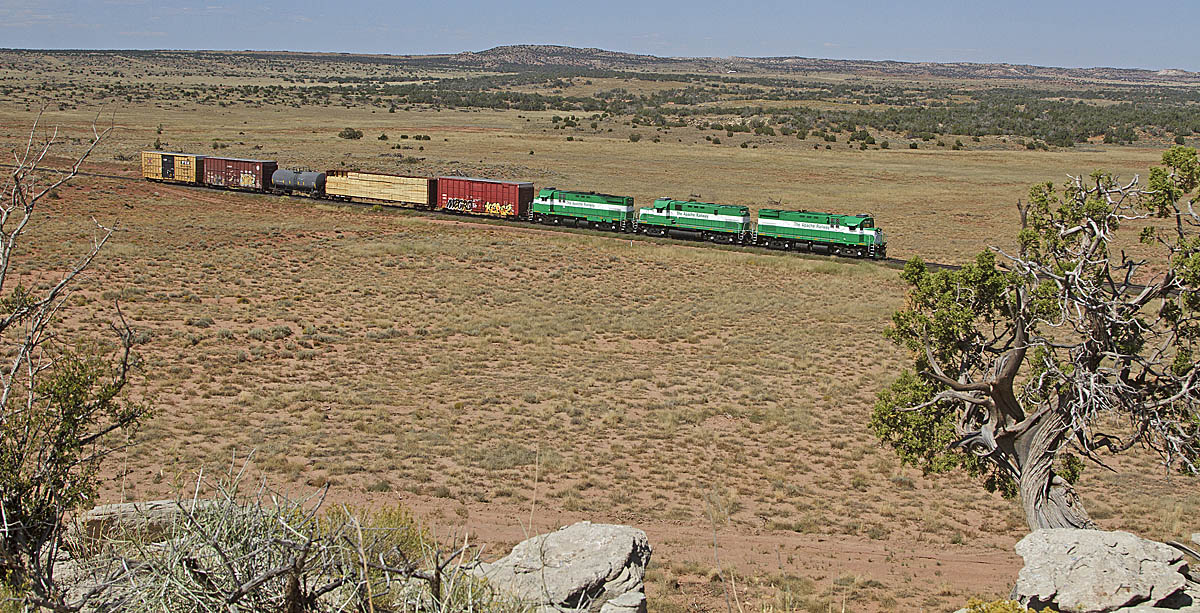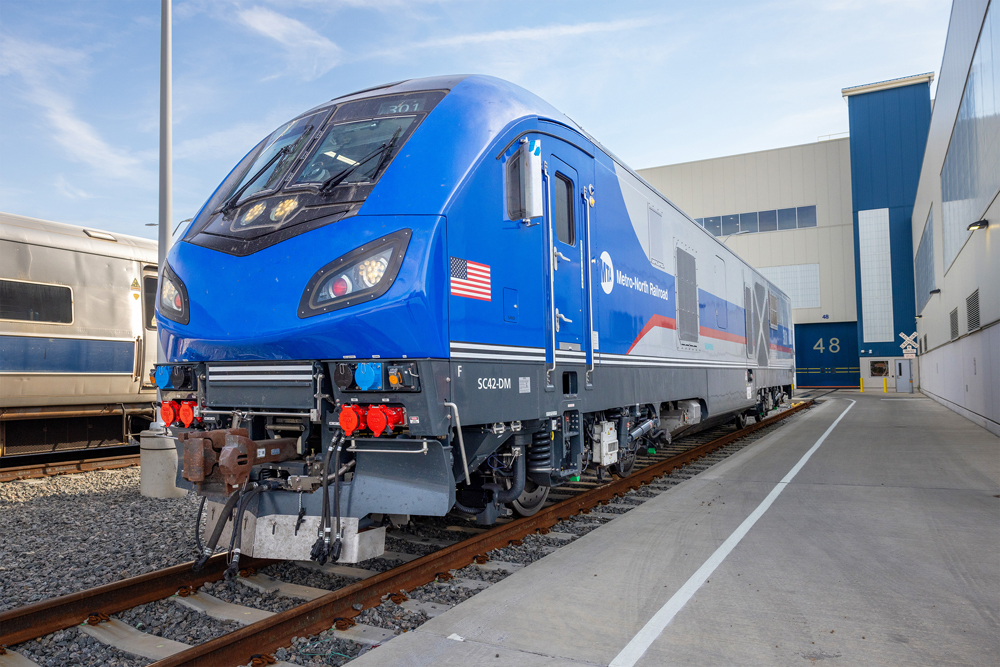The Apache’s history began in 1917 when it began construction from a connection with the Atchison, Topeka & Santa Fe Railway main line at Holbrook and built south to tap timber reserves for a paper mill. On Sept. 6, 1918, the railroad completed its line as far as Snowflake. In the summer of 1920 the route was completed to McNary, for a total of 72 miles. While the Apache has always based its traffic primarily on timber products, it did offer passenger service for a time, and the steam-powered White Mountain Scenic Railroad operated excursion trains out of McNary from 1964 to 1976. The trackage from Snowflake to McNary was abandoned in 1982.
In recent years the Apache relied on one customer to generate the lion’s share of its revenue – the Abitibi Consolidated Paper Mill in Snowflake. The mill, while profitable, was acquired by Canada’s Catalyst Paper Corp., which shut it down permanently on Sept. 30, 2012.
After the mill closed, the Apache was left with one major customer, a Hormel Foods hog farm that gets 90 cars of feed per month. The railroad gained more business when it made a deal with BNSF Railway to store and repair railcars. It is projected to take in $2.8 million in revenue this year and post a profit of $400,000.
The problem is, the railroad is worth more dead than alive – its salvage value is around $12 to $14 million.
After the mill closed, Catalyst Paper sold it and the railroad to an investor group led by Hackman Capital Partners, an owner of industrial real estate. Hackman then dismantled the paper mill. But Snowflake officials were able to persuade the Hackman group to hold off tearing up the Apache while they tried to put together a deal to save it.
The lenders agreed to put the railroad into a nonprofit foundation and extended a short-term loan until local officials could buy them out. Poscharsky applied for a Railroad Rehabilitation and Improvement Financing loan from the U.S. Department of Transportation to buy the railroad. As late as September 2014 government officials were assuring him the loan would go through. Then in November 2014 U.S. DOT denied the load without explanation.
The town scrambled to find another way to finance the purchase and repay the investors, but failed to find a new loan before the railroad’s borrowing agreement expired. The Apache was put into bankruptcy on May 20 after Hackman officials maneuvered to take over the railroad’s operations by claiming they now control the Foundation and the stock of the railroad.
Meanwhile, Poscharsky had been talking with the Arizona representative of the U.S. Department of Agriculture, which has a loan program for rural economic development that looked like it could be the instrument buy the railroad. Officials are now trying to persuade a bankruptcy judge to keep lenders from foreclosing on the railroad until they find out if they will get the USDA loan.
The railroad’s supporters would use the loan to pay off the investors. But the investment firm is pushing for foreclosure. Hackman Capital lawyers have urged Bankruptcy Judge Madeleine C. Wanslee to set sale deadlines that, if missed, would enable the lender to foreclose. Hackman officials have not told Judge Wanslee whether they would dismantle the railroad, but Snowflake officials believe they will, and claim they have seen representatives of scrap companies along the right of way eyeing the property.
All the legal maneuverings will come to a head on July 28 when the Bankruptcy Court will hold a hearing on the technical issue of who owns the Apache’s stock. Depending on that outcome, the town hopes that the judge will okay the purchase of the railroad with the USDA loan, assuming it is approved.
Poscharsky tells Trains News Wire that, this time, the town has been “pre-approved” for the USDA loan, which is non-competing – Snowflake is not up against any other entity for the loan. The formal filing for the loan took place in early June, and it normally takes 60 days a loan to process, Poscharsky says.
“We think we have a good shot at it again,” he says. “We’ll have a railroad one way or another.”














The APA has such an interesting history and the community of Snowflake has worked very hard to keep it intact. Let's hope the USDA comes through and it remains.
Catalyst Paper and Hackman Capital Partners – two examples of capitalism at its worst! (BTW, there seems to be a bit of irony in the name "Hackman", with the hack job they seem to be intent on …)
Business in America. The mill was profitable but it is bought out and shut down so they get a write off then they scrap the mill for another profit. Now the railroad is making a profit "but" again they can use it as a big tax write off by shutting it down then make a bunch of money selling the rails for scrap value. Hence the term "Yes it's profitable but we can make more money via writeoffs and scraping everything".
Watch …A&K will be the rail vultures to pull it! Check online how A&K tried to force the abandonment of the west end of TP&W and the Nevada Northern. The use the "V&S" reporting marks for their manipulations.
Lets hope the judge sees past the short term money grubbers and sides with the railroad!
Have it declared as a State Historical monument.
This scenario reminds me so much of the trials and tribulations that the Stewartstown Railroad recently underwent. Here's hoping the Apache Railway comes out on top too. BTW,
Of Snowflake is a rather unique name for a town.
Having visited the area in 2012 I wish to make the observation that residential playgrounds for the rich in the Show Low area have put much of the local timber supply off limits, and that situation is spreading eastward along the mountain tops to Alpine. Thus closure of the mill may have been influenced by the projection of higher costs to acquire timber. Just speculation, I know.
Not sure how this is an exclusive. I read darn near the same article in the Wall St Journal on Wed.
Yep, the good, bad and ugly when it comes to capitalism all in one story of a shotline railroad. What a different story this would be if Hackman Capital didn't buy for quick buck of scrap metal and the Canadian company didn't close the mill. As Jim asked, Can only speculate that the profitable mill was bought and promptly closed so the Canadian could protect its own mills somewhere else and or protect market share or the value of the machinery and scrap. At least the community and the USDA understands the core value of the having the railroad intact.
Why was a producing paper mill dismantled?